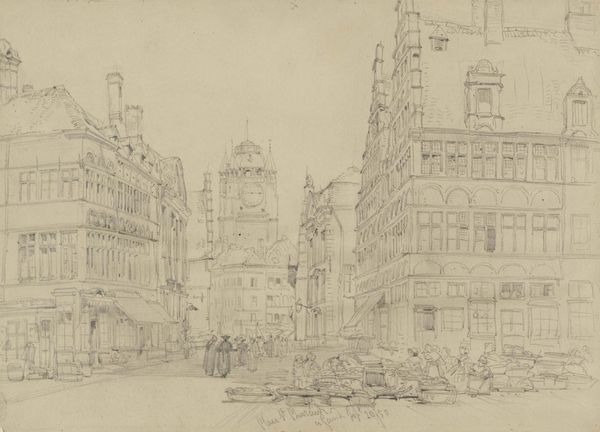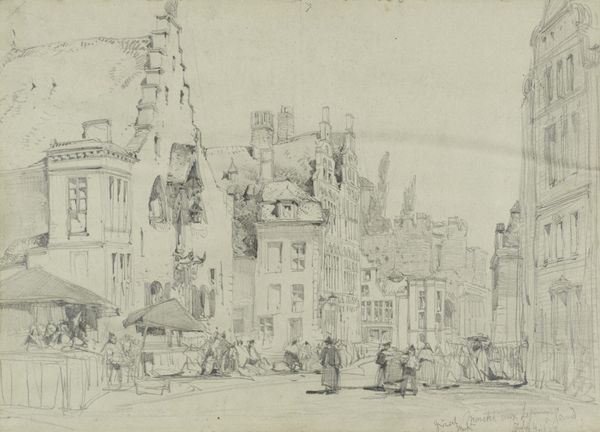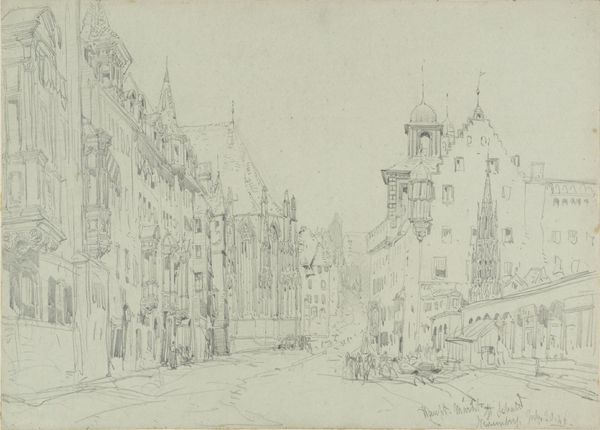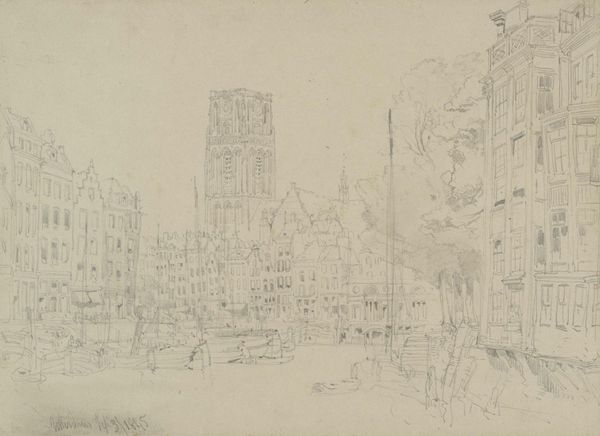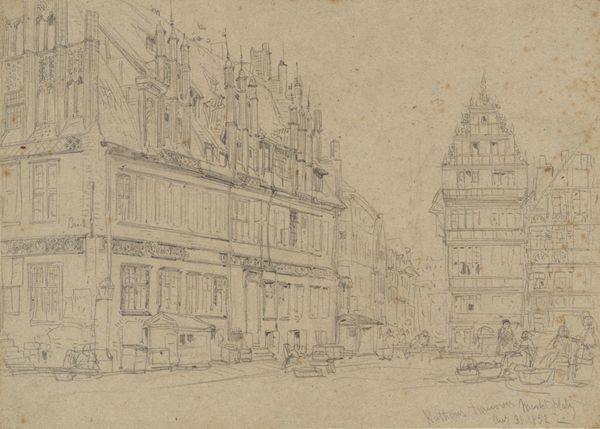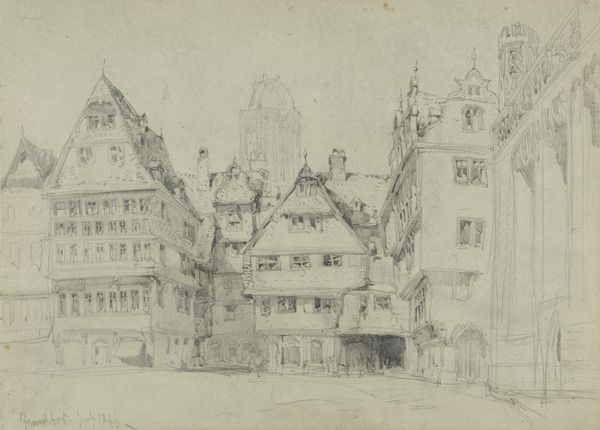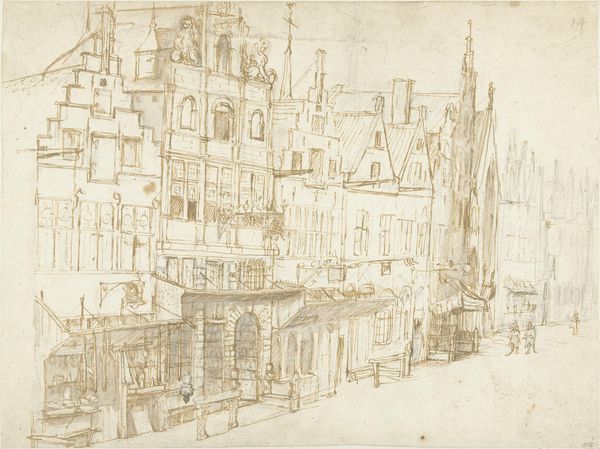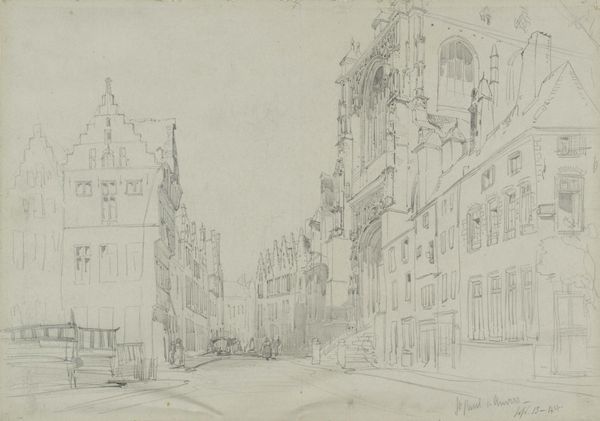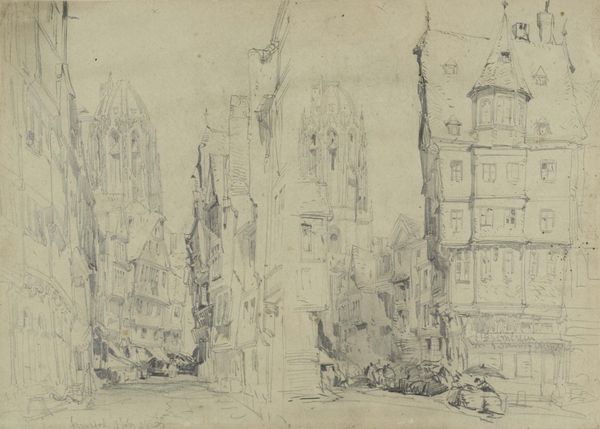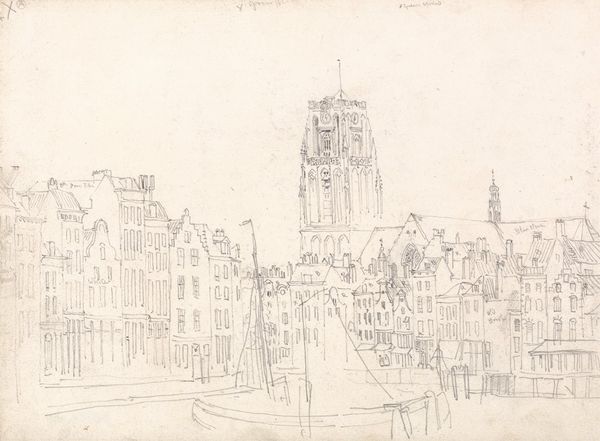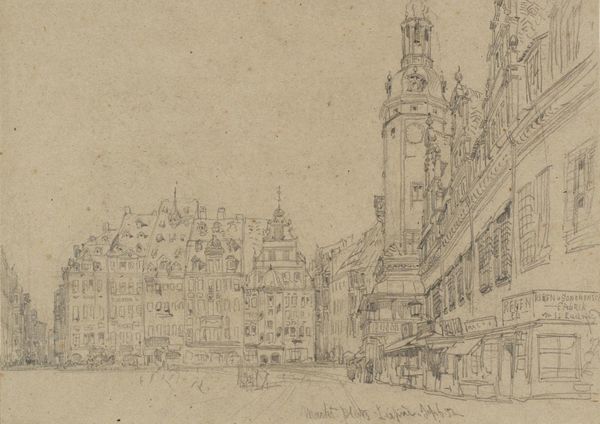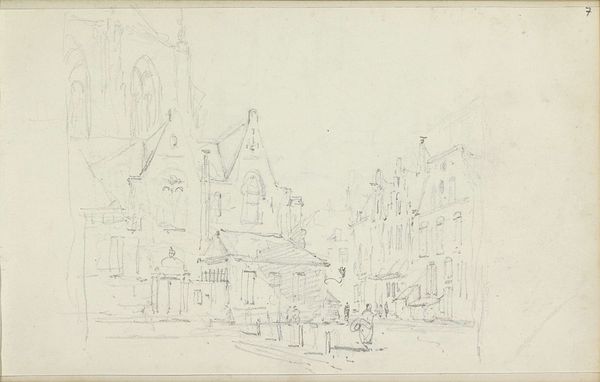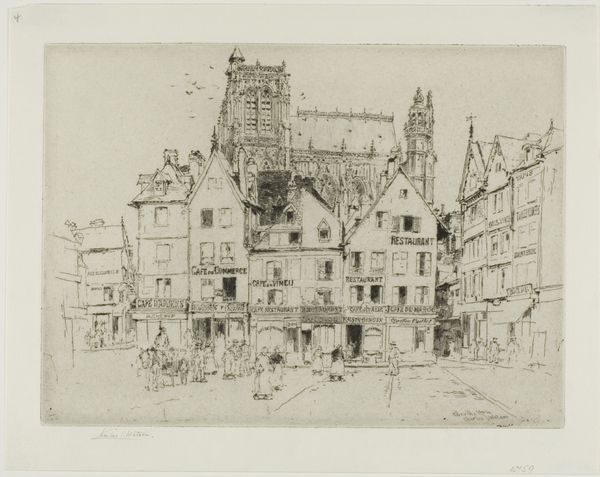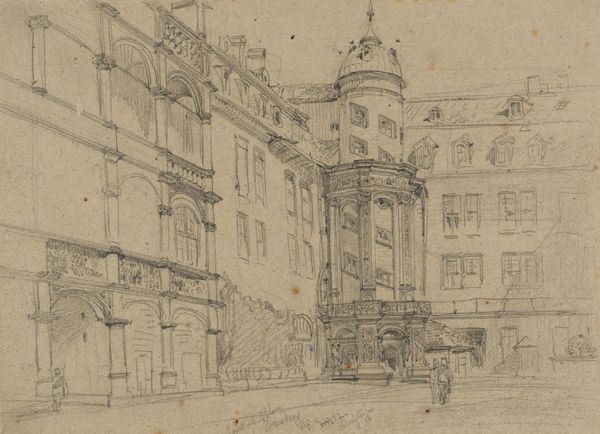
Dimensions: support: 264 x 365 mm
Copyright: CC-BY-NC-ND 4.0 DEED, Photo: Tate
Curator: William Callow’s delicate pencil drawing, “Old Palais de Justice, Malines,” captures a bustling Belgian cityscape. Editor: It's evocative! The skeletal outlines of these buildings, like phantom structures, hint at a past grandeur struggling to remain visible. Curator: Indeed. The Old Palais was a site of significant political and social power. Its image speaks to colonial rule and the function of justice within the city. Editor: I see the repeated vertical lines of the architecture, drawing the eye upward—perhaps indicating an aspiration to higher laws, or…domination? The steeple hints at a connection between the secular and the divine. Curator: Absolutely. The arrangement of people in the foreground, their scale relative to the imposing architecture, signals power dynamics and the role of citizens. Editor: This reminds us of the layered meanings embedded in every urban space, making us question whose history gets told. Curator: A vital point. These glimpses invite us to consider Malines, colonialism, and justice through an intersectional lens. Editor: It really invites a deeper look at the visual language of power etched into our shared spaces.
